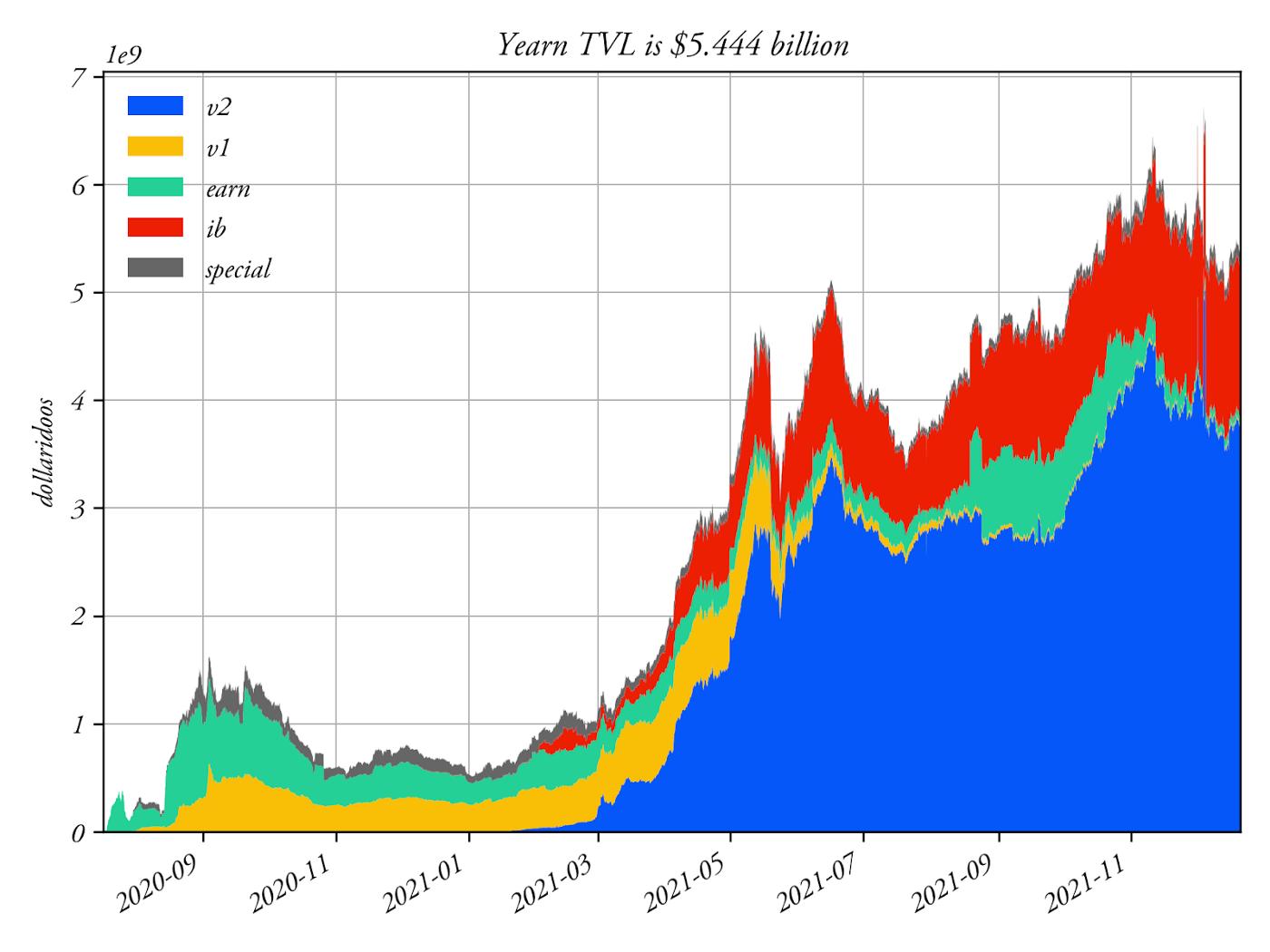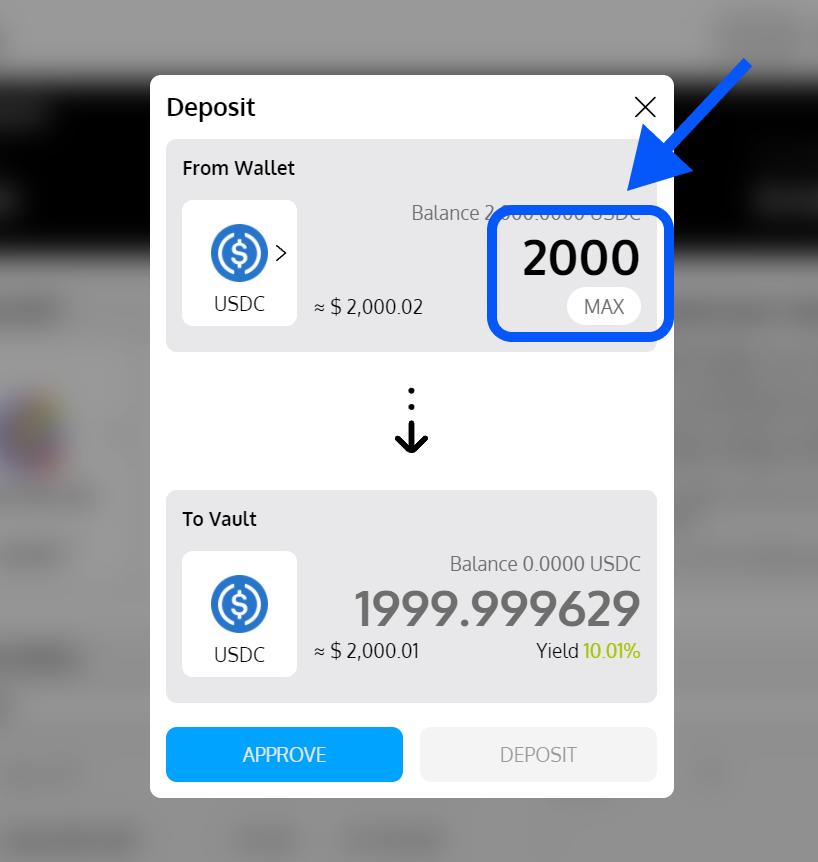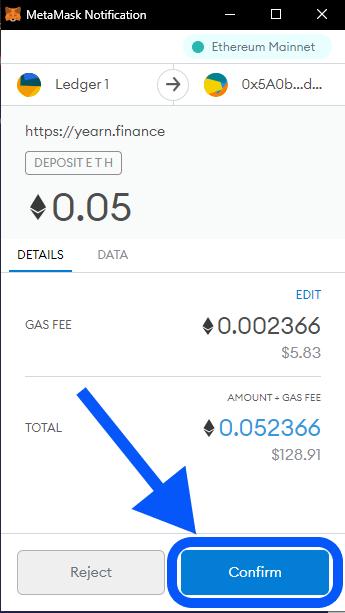Yearn Finance Vault: Unlocking the Door to DeFi Investment
Author: eaglelex
Original Title: Yearn Finance Vaults: Knockin' on DeFi's Door
Translated by: Hu Tao, Chain Catcher
1. Overview of Yearn
The goal of Yearn Finance is to open a door for convenient investment in DeFi. Since its establishment in January 2020, Yearn Finance's founder Andre Cronje has pointed out that to harness the potential of DeFi, we need a more convenient way to invest in it. By the summer of 2020, most people realized the potential hidden in lending protocols, but making digital assets truly work and generating passive income is not easy.
To assess the opportunities and risks of a project, users need to learn and understand blockchain technology and smart contracts. In this context, the birth of Yearn Finance aims to make it easier for users to invest in DeFi. Users only need to provide liquidity to the protocol to earn returns.
Yearn Finance is the flagship protocol in the industry, pioneering asset management in the crypto world, utilizing risk assets to earn passive income. Yearn Finance is often seen as an automated asset manager that allocates users' funds to achieve the highest possible returns. Over the past year, Yearn Finance has become an iconic product of decentralized finance, encompassing all the advantages compared to TradFi (traditional finance). Yearn Finance allows everyone to achieve high returns that seem impossible in bank deposits, while enhancing the ability of DeFi to build financial Lego, i.e., the interoperability of DeFi protocols, thus generating efficient and innovative financial services and products.
The main contributor to Yearn Finance is Banteg, known as the "Yearn Finance Rabbit Talisman," who appeared on the cover of Fortune magazine in August 2021. This indicates that Yearn has intensified the competition between digital currencies, DeFi, and TradFi.
2. How Does Yearn Finance Make Investing in DeFi Easier Through yVault?
Yearn Finance achieves its goal of making investing in DeFi easy and profitable through its flagship product, yVaults (Yearn's vaults). Vaults represent crypto asset savings accounts that accept deposits and distribute them according to the strategy of "seeking the highest available yield in DeFi." When users deposit tokens into a vault, they receive yVault tokens in return. yVault tokens are a type of receipt that also represents the user's share in the yVault. For example, when depositing WETH tokens, users receive yWETH tokens. If the yVault generates profits, the value of the yVault tokens will increase because there are more underlying tokens that can be withdrawn from the yVault. Isn't it simple and clever?
It is clear that the "investment strategy" plays a very important role in the architecture of yVaults. These strategies are determined by Yearn Finance's core component, the "Calculating Hub." The underlying assumption of the protocol is that Yearn Finance can achieve better returns than ordinary DeFi users, or that ordinary users do not have the time to research yield-generating protocols. Both assumptions are correct. However, this article will attempt to explain more complex reasons.
3. A Successful Story of yVault from the Data Perspective
One of the most important indicators to assess whether a DeFi product is successful is the Total Value Locked (TVL). Yearn's TVL is currently valued at $5.44 billion on Ethereum and $354 million on Fantom, having nearly reached $7 billion last year. According to Defi Llama statistics, Yearn ranks thirteenth in TVL within the DeFi ecosystem, which is still relatively high.

Over 50 yVaults have brought considerable income to the Yearn community. Approximately $100 million in fees collected from the vaults enters Yearn's treasury each year. yVault has fixed fee rules: every time the vault's strategy settles profits, a 20% performance fee is deducted from the earnings. Additionally, a 2% management fee is charged annually from the total deposits in the vault. These fees are extracted by minting new shares of the vault, thereby diluting the vault participants. They are completed during profit settlement and calculated based on the time of the last settlement.
The performance of the vault is measured by the "Annual Percentage Yield" (APY), which is the main criterion for deciding whether to provide liquidity to the vault. Clearly, the APY varies for each vault based on the type of tokens provided. The market demand for stablecoins is high, while governance tokens have fewer use cases. Starting from v2, users withdrawing funds from yVault are no longer charged withdrawal fees. Furthermore, Yearn publishes quarterly financial reports on GitHub, where users and community members can view the income of yVaults.
The ability to generate revenue makes Yearn Finance one of the most robust DeFi protocols. It should also be noted that Yearn does not provide rewards for its users. The strong foundation and serious measures have not led to a significant price increase for Yearn Finance's governance token YFI; unfortunately, YFI performed poorly in 2021 compared to other DeFi projects. This highlights the difficulty of matching a well-functioning protocol with favorable tokenomics strategies. However, the core team has proposed a plan to improve the current tokenomics, which was recently accepted by the community.
4. The Essence of yVault: Strategy
Investment strategies are the essence of Yearn's products. In v1, each vault only supported one strategy; in v2, each vault can implement up to 20 strategies. This innovation is significant because it increases the flexibility of the protocol and makes effective management according to different market scenarios possible. To limit the risk exposure of strategies that can no longer increase APY, each strategy has a capital cap.
As of now, Yearn members have deployed a total of 242 strategies across different vaults. For each strategy, there are two participants: the guardian and the strategist, who oversee the strategy's performance and have the authority to take action to improve management or intervene in critical situations. After the approval of the YIP-52 proposal, the profits of the vault are evenly distributed between the strategists and the vault. This creates strong incentives for contributors dedicated to writing the best strategies.
Of course, it is impossible to describe every strategy in detail. Some are easy to understand. For example, one strategy for the USDC yVault (yvUSDC) involves depositing USDC into the DAI-USDC-USDT stable pool on Balancer.fi. The generated BAL is harvested and sold for more USDC, which is then reinvested into the strategy. Here, a basic understanding of Balancer is sufficient to grasp the scope of the strategy. However, things are not always that simple, and there is one vault worth special attention in this regard.
One of the most important components of Yearn's infrastructure includes collaboration with Curve.fi. In fact, some yVaults provide liquidity to Curve pools and deposit LP tokens into their respective meters to earn CRV rewards. One of the most important vaults is yveCRV-DAO. This vault converts CRV into yveCRV and allows users to earn a portion of the Curve fees, which will enhance the income from the user's staked assets on Curve. The more CRV converted, the higher the weekly rewards.
Every Friday, these can be claimed as 3Crv (Curve's 3pool LP tokens) from the vault. Yearn itself deposits 10% of the earned CRV into BackCratcher and distributes its 3crv rewards to vault token holders, which is the source of the weekly reward increase. In this case, the deposits are irreversible: CRV can only be converted into yveCRV, as CRV is permanently staked in Curve's voting escrow.
"Yearn's goal is clear: to accumulate as much CRV as possible to maximize the potential uplift for all vaults." ------Ben Giove
At this point, Yearn competes with another protocol, Convex Finance, for enhanced CRV returns (depending on the amount of veCRV held and the liquidity in the pool). The Convex protocol aims to help Curve liquidity providers and CRV holders maximize their yields. Due to similar strategies and aggressive approaches, there are questions about whether Convex can be seen as a competitor that can defeat Yearn.
Nearly 8 months after Convex's launch, Yearn seems not only to be alive but also in very good shape. The most direct answer is: Yearn is not just a simple CRV farmer. More generally, Yearn's success depends on the significant returns of their strategies. Yearn encourages everyone to bring value to the protocol when formulating new strategies regarding different tokens or protocols. These incentives are very high, creating a win-win situation for users, strategists, and Yearn's vaults.
To gain precise knowledge about the characteristics of the vaults, the Yearn team created a vault encyclopedia. It provides up-to-date and firsthand multi-chain information about each vault deployed by Yearn. On Ethereum, the vaults are divided into four categories: stablecoins, DeFi tokens, Curve pools, and retired vaults (not available). This encyclopedia will automatically update its content and support multiple languages in the near future.
5. Quick Guide: How to Use yVaults
Yearn's vaults are both simple and complex. The strategy examples seen earlier indicate that DeFi can be difficult to understand for inexperienced users. Without a deep understanding of the technical details involved, it is hard to assess the returns obtained from the composability between different protocols. However, these complexities do not hinder the use of Yearn; its usage is very straightforward.
First, connect your wallet and choose a public chain to use Yearn: Ethereum or Fantom.

Then, users need to select the vault to deposit tokens into and enter the amount of tokens they wish to deposit.

After that, click "Approve" or "Deposit," depending on whether there has been prior approval. The wallet will request confirmation of the transaction, which takes about 3 minutes, but can be expedited by paying a higher gas fee.

Once the transaction is successful, users will see their deposit balance in the vault interface, displayed at the top of the vault list.

When withdrawing, users must select the vault and then click "Withdraw." Next, enter the amount to withdraw or click "Max" to withdraw the entire balance. After clicking "Withdraw," the wallet will request confirmation of the transaction. When the transaction is successful, the tokens will reappear in the user's wallet.
Given that many of Yearn's vaults generate returns by using Curve Finance liquidity provider (LP) tokens (obtained by depositing into Curve pools), users often do not have the tokens required by the vault. To address this issue, Yearn provides a "zap" feature that allows users to convert their tokens into the tokens required by the vault in a single transaction.
To track the changes in the dollar balance of user assets in the vault, users can connect their wallets to portfolio tracking products. The balance will not continuously increase; when the claim function is called, profits will be allocated to the user's share in the vault, which occurs on a volatile basis.
Here are the resources recommended by Yearn for monitoring vault returns:
- Zapper
- Zerion
- yVault ROI
- Trackavault
Yearn is "the simple version of DeFi." The new user interface in v3 also offers an intuitive and user-friendly system. Users essentially just need to connect their wallets, click a button, and assist in generating returns. If one trusts the protocol, the basic element to evaluate whether to execute transactions is theoretically the APY. However, it is wise to check and understand the strategies behind yVault, as each strategy carries a certain level of smart contract risk. Yearn staff are always available to answer questions and provide information via Discord or Telegram.
6. Assessment
Why would people use yVault? Certainly, for an ordinary DeFi user, it is difficult to formulate and implement investment strategies like those launched by experienced Yearn strategy experts. However, it is well known that mimicking others' strategies is quite common. The success of yVault is related to other more significant factors.
First, yVaults provide users with a certain level of security. Yearn Finance has previously been hacked and has repaid its debts to victims. Risks always exist in DeFi, but Yearn places the utmost attention on smart contract audits and code evaluations to avoid exposing its users to risks. They conduct careful assessments of the protocols connected to the vaults to limit financial and technical issues. Yearn has created yAcademyDAO, a community-driven blockchain security approach aimed at creating sustainable and collaborative blockchain security and ensuring talent is properly utilized.
Second, Yearn reduces capital efficiency. The operation of the vault limits the amount of gas fees that a single user may face when adopting the same strategy. Additionally, the Yearn team is working on automating smart contracts. As stated in Yearn's latest newsletter:
"Scalability requires reducing manual processes." The goal is to create automated systems that make decisions based on data analysis.
In summary, yVaults will continue to exist, and every new DeFi product theoretically has the potential to become the basis for new strategies to generate returns. With its strong and attractive community, Yearn will continue to be an important part of the future of DeFi!










